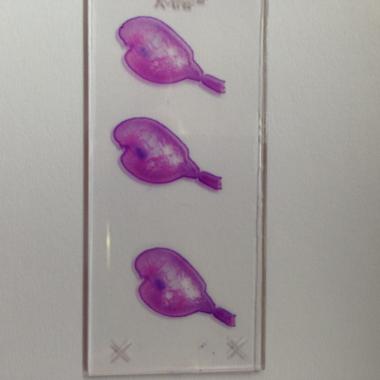

Polydactyly is the most common congenital digital anomaly of the hand and foot. It may appear in isolation or in association with other birth defects. Isolated polydactyly is often autosomal dominant, while syndromic polydactyly is often autosomal recessive.[1] See the image below.
 Supernumerary digit, no magnification.
Next
Supernumerary digit, no magnification.
Next
Early theories for polydactyly concerned disorders in the programmed cell death cycle of fetal limb development. Current theories focus on mutations in specific genetic locations that cause limb development to go awry.[2]
Many specific mutations have been linked to polydactyly; however, a molecular etiology has not been found in a third of human disorders associated with polydactyly.[3]
Mammals have been shown to have genetic clusters identified as homeobox or Hox genes corresponding to five domains across the limb bud. According to Muragaki et al,[4] mutations in the HOXD13 gene are associated with synpolydactyly.
The steps in limb development and outgrowth are controlled by at least two described signal centers, as follows[3] :
As limb growth in utero progresses along a preset timeline, elongation of the limb, development of soft tissue, and differentiation of digits progresses.
The Medscape Genomic Medicine Research Center may be of interest.
United States
Despite being a common malformation, the true incidence of polydactyly is not fully known. The epidemiologic data on polydactyly is limited because most birth defect registries do not include the entity. One study by Finley et al[5] combined data from Jefferson County, Alabama and Uppsala County, Sweden. This study showed incidence of all types of polydactyly to be 2.3 per 1000 in white males, 0.6 per 1000 in white females, 13.5 per 1000 in black males, and 11.1 per 1000 in black females. The Swedish data alone showed polydactyly of all types to have an incidence of 1.0 per 1000, equally distributed between males and females.
International
Genetic and ethnic factors seem to influence the nature of polydactyly in the world population. Unfortunately, the knowledge of polydactyly is limited to select studies of certain subpopulations. Preaxial polydactyly is very common in various Asian populations, accounting for 90% of cases in South China, Hong Kong, and Japan. Duplicated thumbs at the metacarpophalangeal level are the usual anomaly.[6, 7]
Postaxial hand polydactyly is a common isolated disorder in black children, and autosomal dominant transmission is suspected. In contrast, postaxial polydactyly seen in white children is usually syndromic and associated with an autosomal recessive transmission. Postaxial polydactyly is approximately 10 times more frequent in blacks than in whites and is more frequent in male children.
Other factors associated with postaxial hand polydactyly include twinning, low maternal education, parental consanguinity, occurrence in first-degree relatives, and maternal bleeding in the first trimester.
Clinical Presentation
Copyright © www.orthopaedics.win Bone Health All Rights Reserved